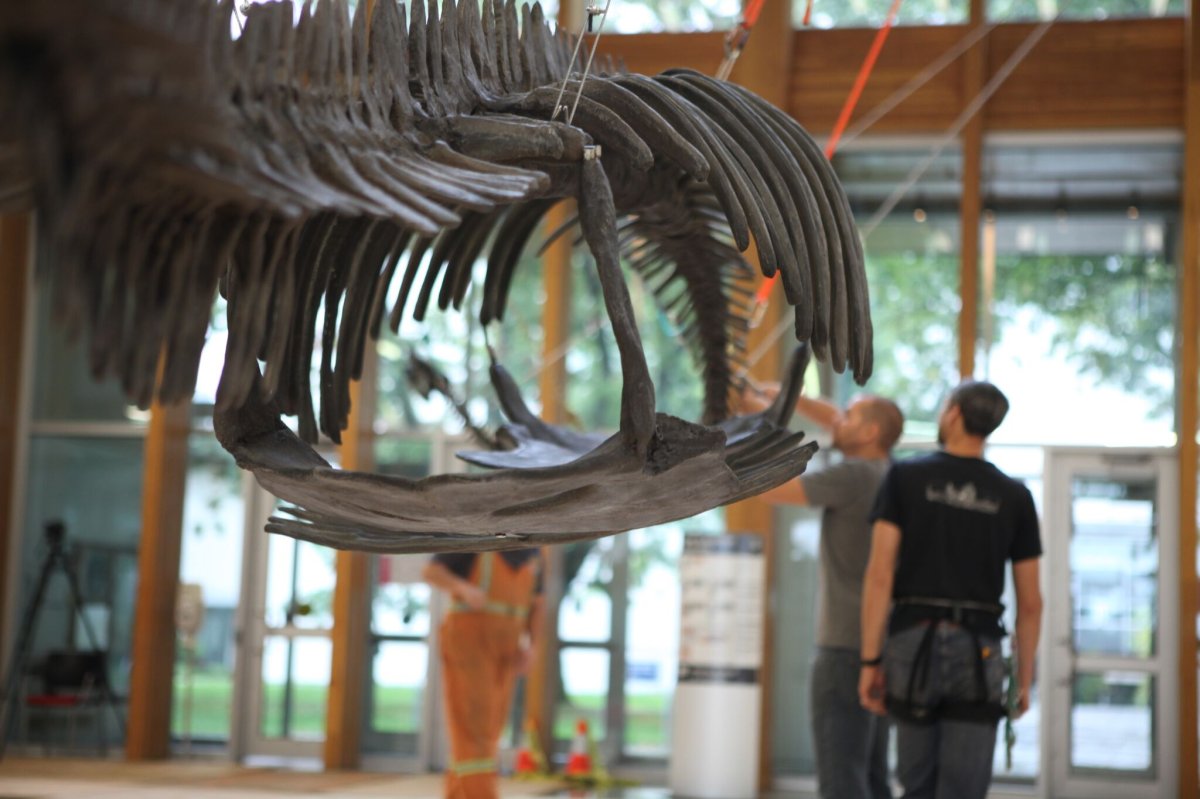Visitors to the University of British Columbia’s (UBC) Earth Sciences building will now want to look up when they cross the atrium.

A huge skeleton from the Jurassic era of a ‘sea monster’ called Elasmosaurus has been installed as part of the university’s natural history collections.
The cast skeleton is 13 metres long, with more than half of that length, seven metres, taken up by its neck. The scale of Elasmosaurus is roughly the size of eight average humans stacked vertically.
Experts believe the creature coexisted with dinosaurs 80 million years ago, and lived in North America during the Late Cretaceous period. However, they are considered ancient marine reptiles, which are different from dinosaurs.
“I think to walk in and see something this big is arresting because we don’t imagine creatures swimming around the ocean that were 13 meters long,” says Kirsten Hodge, director of Pacific Museum of Earth.
Hodge adds a smaller Elasmosaurus was found in Vancouver Island near Courtenay, B.C.
This big creature actually thrived in the same water where many of us now swim.
WATCH: A team of installers work to place a 13-metre-long cast skeleton of an ancient elasmosaurus in the atrium of the UBC Earth Sciences Building.

There are many debates on how the sea monster moved and fed itself with such a long neck. Earth Ocean and Atmosphere Sciences professor of UBC, Stuart Sutherland, believes it’s unlikely that the sea monster could lift its head above water.
“Initially we thought it could maybe twist its neck like a snake, reach out of the water and grab stuff. We don’t think so now,” Sutherland says. “We think it’s a relatively stiff rod. Maybe it used that tiny head to sneak up shells and fish.”
The only confirmed complete Elasmosaurus skeleton was found in Kansas. The Canadian Museum of Nature in Ottawa has also installed a duplicate skeleton.
UBC has previously installed a hooded dinosaur skeleton, Lambeosaurus, and Canada’s largest blue whale skeleton at the Beaty Biodiversity Museum.




Comments